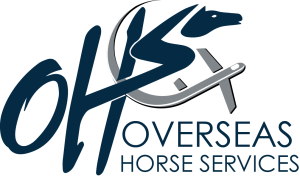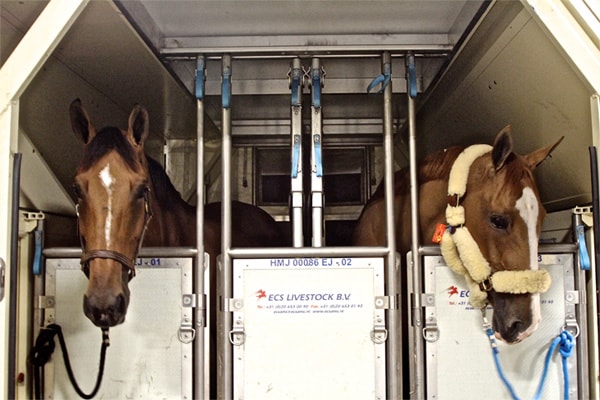High-flying equine passengers travelling on a ‘first-class ticket’
MICHELE JARVIE
It’s no simple envelope being FedExed across the world. The process of flying million-dollar equine athletes to Spruce Meadows each summer is more like a military-style logistical operation.
“Actually, you can FedEx a horse. We shipped (for) Margie Goldstein-Engle from Memphis to
Seattle, and then we trucked her here,” said Kim Hoover of Calgary-based Overseas Horse Services, which transports horses to competitions at Spruce Meadows.
The National show jumping tournament going on this week includes competitors from 16
countries, including Japan, Chile, Egypt, Russia and Uruguay.
Some of those already competing in North America arrived in transport trucks, while others
came on Tex Sutton (or Air Horse One as it’s known), a charter or a regular flight.
While it’s a major undertaking for the grooms and vets responsible for their safety, most of the
horses coming to Spruce Meadows are old hats at flying.
This year alone, American Kent Farrington’s horses have winged their way to Florida, Mexico, China, Great Britain, Spain, Germany and France, all before arriving here this week in Calgary.
“On our big charter this week we had 52 horses on 25 pallets,” said Hoover.” It’s pretty routine
for them.”
There’s a lot of behind-the-scenes work to preparing a flight.
Each horse requires its own passport, a microchip and health papers, which are all checked before loading. On-board placement is like a Jenga puzzle as stallions can’t be put near mares.
Each horse is put in specially made stalls that are contained within a cargo box called a pallet.
A crew, which includes the riders’ grooms and a veterinarian, flies with the horses to their destination.
“It’s come a long way from what it used to be,” said Spruce Meadows spokeswoman Caroline Grant.
In the late 1970s and early ’80s, horses were flown on Lougheed Hercules or Electras.
There was no easy way to load the horses: they had to be encouraged to go up a steep wooden gang-plank into the plane.
Stalls were then built around the horses waiting inside the plane and would be dismantled once they got to their destination. Some brave guide had to lead the horses back down the ramp to the tarmac. After hours of standing in a confined space, some horses’ knees would
buckle and they’d tumble coming down the ramp.
There were no seats for the trainers, who would have to hang on during takeoff and landing.
It’s a lot more comfortable now, even with 10-hour journeys from Europe.
“Really, it’s a first-class ticket,” said Hoover. “There’s the odd horror story but horses tell you really early that they’re going to have a problem.
“If you’re a horse person and you listen to the signs they’re giving, a lot of time there’s something you can do.”

